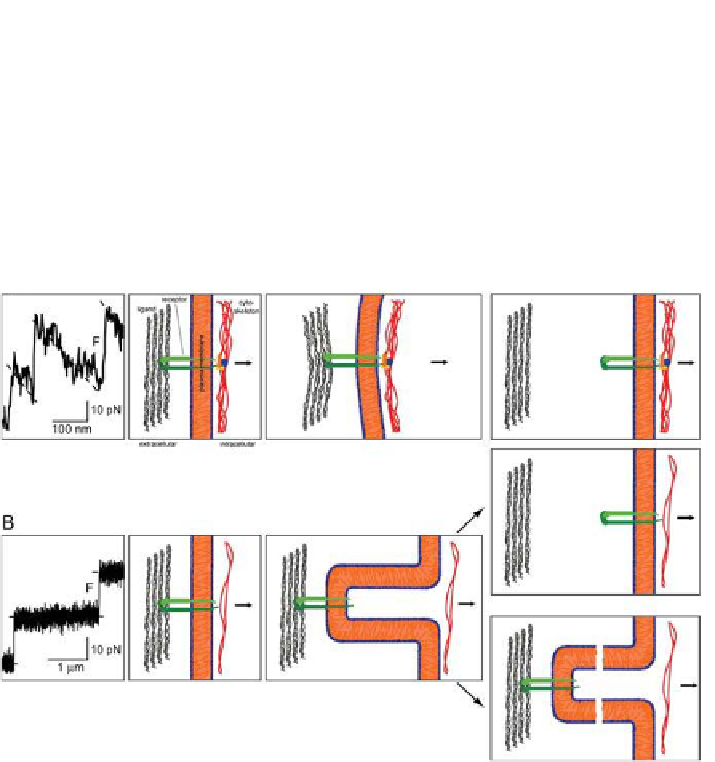Biology Reference
In-Depth Information
the lifetime of their tethering receptor-ligand or other bond.
50
Extracting
membrane tethers AFM can be used to characterize cell membrane properties
such as its anchoring to the cytoskeleton or its viscosity.
52,53
Changes in the
receptor-cortex anchoring strength are revealed by comparing the number
of bond ruptures (jumps) to tether-events.
39
With weaker anchoring of
membrane and cytoskeleton, the probability of pulling tethers rises whereas
the force required to extract tethers decreases.
50-52
(a)
(b)
Figure 10.6.
Scenarios causing jump- and tether-events. (a) Exemplary jump-
events extracted from an F-D curve (left). A receptor anchored to the cytoskeleton
binds to a ligand. Upon cantilever retraction, the receptor-membrane-cytoskeleton
linker is stretched and the force acting on the cantilever increases. Upon rupture
of the receptor-ligand bond, the force on the cantilever rapidly decreases. (b)
Exemplary tether-events extracted from an F-D curve (left). A receptor that is not or
weakly anchored to the cytoskeleton is extracted from the cell body at the tip of a
membrane tether. The force acting on the ligand of the cantilever remains constant
during membrane tether extraction. When the receptor-ligand bond breaks (upper
sketch), the membrane tether fails (sketch below) or the receptor is pulled out of the
membrane, the force on the cantilever decreases staircase-like.
10.3.3.3 Separaon distance
The separation distance,
(
Fig. 10.4b
)
is the distance at which all linkages
between cell and substrate have been ruptured. This length is highly
inluenced by membrane tethers.
d
















Search WWH ::

Custom Search